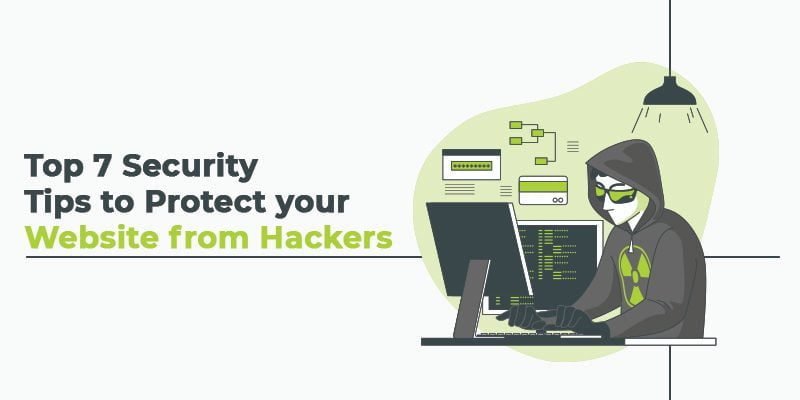Many companies and individuals who handle websites think that their websites won’t be under attack. It is the biggest threat to any company’s website that holds data. If you are looking for ways to protect your website by patching security issues and vulnerabilities, which hackers can take advantage of, then this is the guide you must read on. Here we will discuss the top 7 security tips to protect your website from hackers.

Update software frequently
This tip is probably the easiest and a logical one. Updated software helps you secure your website from all possible security attacks. Why is that so? The moment you rely on legacy software or outdated software, you end up with outdated security features. How much ever you patch your security issues and strengthen your security profile, the outdated software becomes a loophole in the system. To prevent a cyber attack of sorts, you must keep updating your software regularly. It will not only offer you the latest feature sets but also fixes many security issues that would have existed in the first place. A well-designed Cyber security program is essential to counter all kinds of security threats.
Look out for attacks like SQL injection.
SQL injection is a form of website hacking that is performed by hackers when they use a web form or URL parameter that enables them to gain access or manipulate the database. What these hackers do, is that instead of putting their replies, they inject malicious codes that force the database to give out unauthorized information at the hacker’s request. You can prevent this attack by implementing parameterized queries, which many languages have the option to do nowadays.
Arm yourself from XSS attack
XSS means Cross-Site Scripting. It is an attack wherein hackers can inject malicious JavaScript code in pages, comment sections, and anywhere there is a field. It will then run on browsers and can change contents or leak information to the attackers. So you must ensure that you don’t put up a user comment unless it’s validated. It is a growing concern in today’s scenario because most apps today have user-generated content. You must implement correct rules to check and validate every user-generated content and ensure that it doesn’t contain any malicious JavaScript code which then a browser will execute which is against what you intend.
Be careful in handling error messages.
Error messages are part of every service. Be aware of how the information you are giving away to users, in which hackers are present. If they get more information about how the website reacts then they will figure out a way easier to break into the website. So you must be very clear and careful in giving away details of the error. Don’t offer the complete error cause and the details of the error. You must store detailed errors in your server logs, but only provide information that the user needs to see.
Check passwords
Using strong passwords is a no-brainer. As complex as your passwords are, it’s to break in. But another thing you must remember is that passwords are easy to crack, so you must keep on changing the passwords at regular intervals. It is paramount to use strong passwords for the server and admin area. And also implement good practices to secure the accounts like the use of different characters, uppercase and lowercase letters, and numbers will help maintain security. Many websites and CMS platforms offer security measures like these in-built.
Avoid users uploading files to your website.
Allowing users to upload files and not getting them validated can jeopardize your security protocols. Because hackers take advantage of such loopholes and upload malicious files that look simpler. But in reality, they may contain malicious scripts that can seriously derail the safety regulations of a website. So you must keep strict protocols to check the type of file that you are allowing the users to upload and what they are uploading.
Use HTTPS
HTTPS or Hypertext Transfer Protocol Secure is an extension of HTTP. It’s used for securing communication over a computer network. This HTTPS ensures a user that they are interacting with the exact same server they intended and are not redirected to a different server.
Get website security tools.
Once you have performed all the patches and walked through all the above steps to secure the website. It’s now time to test it. For that, you have various security tools in hand to perform it. This process of testing is known as Pentesting or penetration testing. There are lots of tools that are available that you can use and attempt for the breach through identifying the loopholes. You can check for the vulnerabilities, threats, any tool left to be updated, SQL injection possibilities, loose passwords, not-so-strong firewalls, improper security regulations or protocols in place, etc.


Leave a Reply